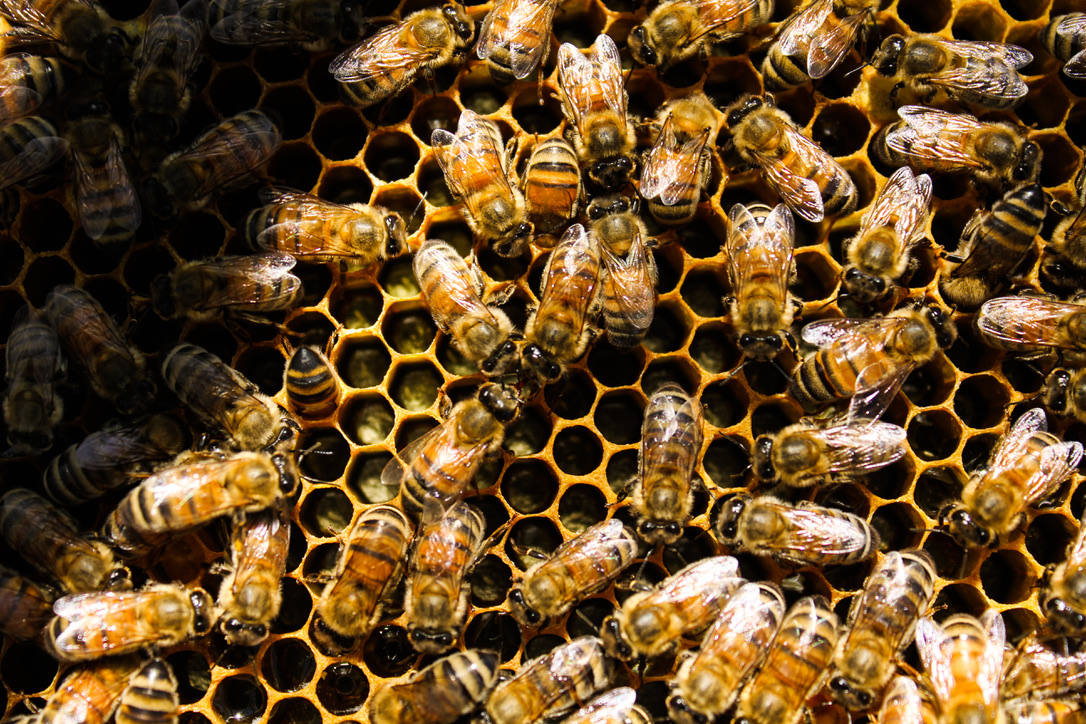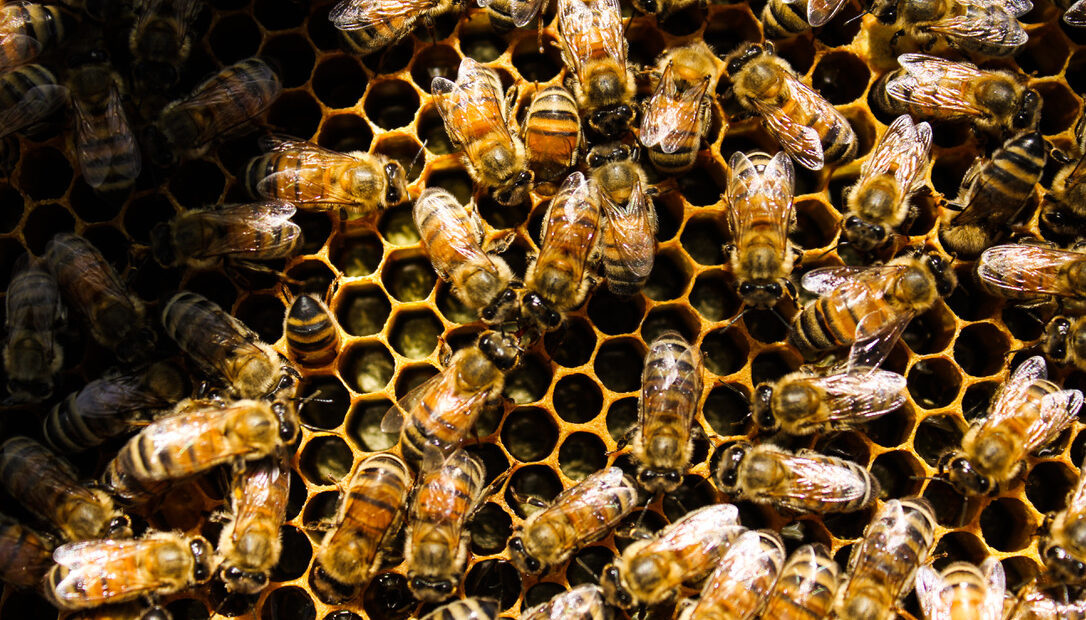
The buzz: New honey bee vaccine could protect pollinators, improve U.S. agriculture
Listen
(Runtime 1:07)
Read
Honey bees and other pollinators play a crucial role in helping grow our crops, pollinating one third of the food humans eat each year.
But amid habitat loss, climate change, and disease, honey bees are facing multiple challenges for survival, including American foulbrood (AFB), a bacterial disease that can spread in spores through beehives, taking down entire colonies.
This year, the U.S. Department of Agriculture granted a conditional license for a new vaccine from Dalan Animal Health to protect honey bees from AFB.
Northwest bee researchers who study honey bee health say this new vaccine could potentially help honey bee populations in the U.S.
“It’s expensive to have to replenish the beehives that are lost every year. So anything we can do to not have to do that will save beekeepers a lot of money,” said James Van Leuven, an assistant professor at the University of Idaho who researches bacteria and diseases affecting honey bees.
Beekeepers lose about 30% to 40% of their bees every year, Van Leuven said. The reason why still eludes researchers, but this harmful bacteria is part of what can infect the hives.
Van Leuven said the new vaccine could be a preventative measure to keep the disease from spreading through beehives.
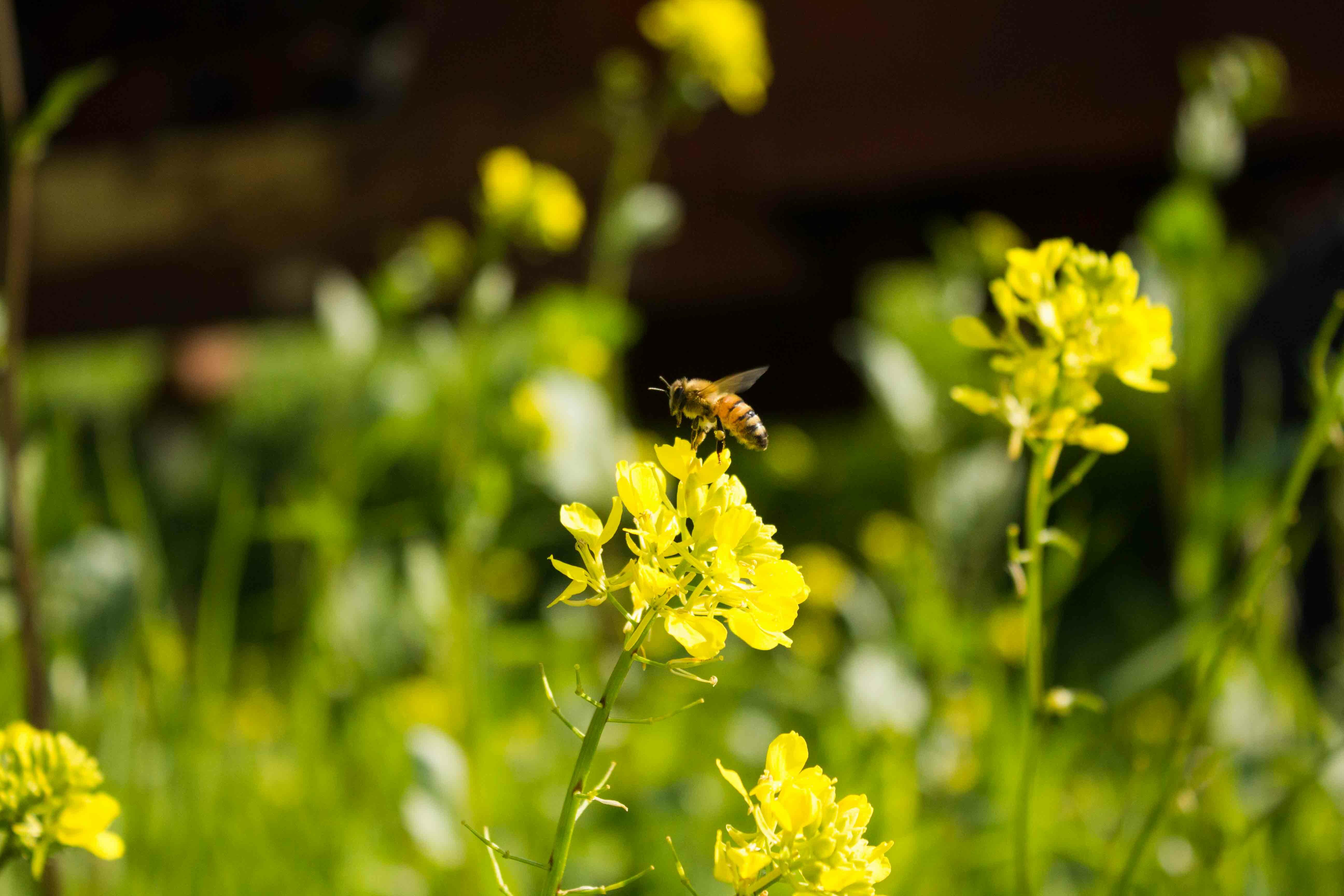
All worker bees are female, but only the queen bee creates the babies for the hive. (Credit: Dalan Animal Health)
Pollinators like honey bees improve global crop output by between $235 and $577 billion annually, according to the National Library of Medicine.
These busy bees are a big deal for agriculture, which is one of the reasons for Washington State University’s new Honey Bee and Pollinator Research, Extension and Education Facility in Othello, Wash.
Nick Naeger is a molecular biologist who studies bee disease at the new pollinator-focused research center. He said American foulbrood spreads through food bees eat. If the nurse bees feed it to the babies, it can be spread through the colony, the same way a virus might travel through a pre-school.
“And now that bacteria replicates, and produces a billion copies of itself, right there in the middle of the brood, right in the middle of their nursery,” Naeger said. “So now how do the bees clean that up without spreading it?”
While the bees might do their best to stop the spread, the infection can still carry and kill off entire colonies. Since American foulbrood can also be spread by spores, beekeepers can unknowingly spread it hive-to-hive on their tools, said Naeger.
The vaccine works by being mixed into food for the queen, which is produced by worker bees. The vaccine makes its way into the royal jelly produced by the worker bees, who feed it to the queen. After she consumes the royal jelly containing the vaccine, the developing larvae have immunity when they hatch.
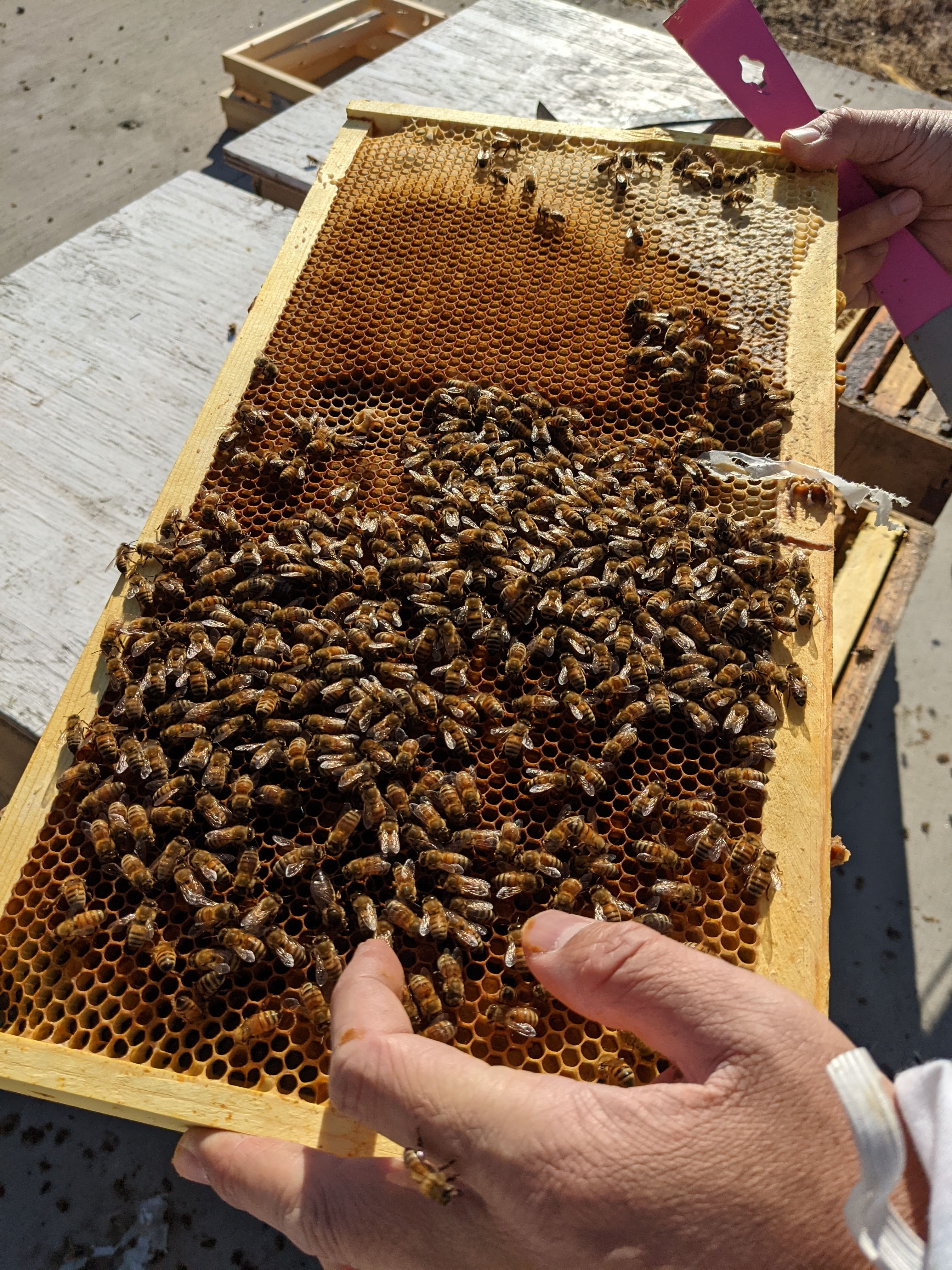
A scientist checks on the queen bee and her workers at WSU’s honey bee research facility in Othello, Wash. (Credit: Lauren Paterson / NWPB)
One unanswered question is the cost, said WSU researcher Walter S. Sheppard, who studies bee genetics. Hobbyist beekeepers might not mind paying $20 or $30 more dollars for a vaccinated queen bee, but for large commercial beekeepers, those costs will add up, he said.
In the mid 2000s, Sheppard said the average bee population losses for commercial beekeepers was between 10% and 15%. After the onset of Colony Collapse Disorder, the loss is now around 30%, sometimes up to 50%, Sheppard said.
“You can imagine if you had a cattle operation, and every year you lost half the cows, it’d be hard to stay in business,” said Sheppard.
Naeger said the honey bee population isn’t necessarily driven by bee health as much as it’s pushed by economic demand.
And one of the major costs of producing much of our food, like apples and almonds, is pollination, said Sheppard.
Until now, antibiotics were the only method used to treat the infection, which researchers say can be expensive and time consuming for beekeepers, with mixed results.
“This is an exciting step forward for beekeepers, as we rely on antibiotic treatment that has limited effectiveness and requires lots of time and energy to apply to our hives,” said Trevor Tauzer, a board member of the California State Beekeepers Association, in a quoted statement from Dalan Animal Health.
Beekeepers who breed the bees used in massive pollination operations, like growing almonds in California, is a complicated process, and one teetering on the edge of sustainability, Naeger said.
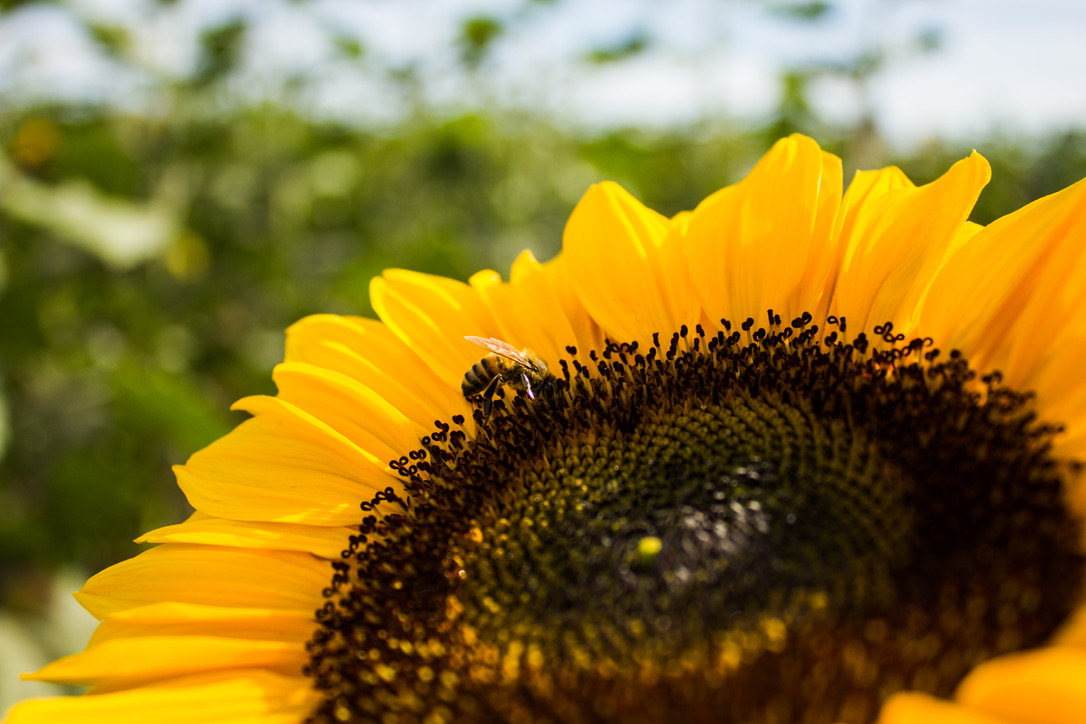
Northwest bee researchers say the best way to help the honey bees is to plant flowers, and leave parts of your yard wild for pollinators to nest. (Credit: Dalan Animal Health)
“Even though the [bee population] numbers are back up, I think that’s largely driven by demand for the pollination services,” he said. “We can still be very concerned, because even if we are able to keep those numbers high, those costs are very real to the farmers and growers, and eventually to consumers, too.”
The vaccine could be a tool for isolated outbreaks in bee colonies, said Sheppard. He and fellow researchers at WSU have been looking for naturally occurring chemicals that can boost the bee immune system to help them fight viruses. And the new vaccine lays the groundwork for future ways to fight disease, he said.
Better bee health is better for the entire pollination system, said Naeger. As a bee researcher, he said people always ask him what they can do to help the honeybees.
“The answer is simple. Plant flowers and leave a few places [in your yard] wild, so honey bees have somewhere to nest,” he said.

